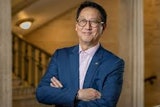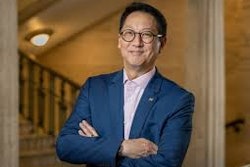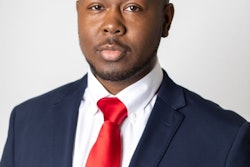Two-Year Schools Overworked, Undervalued, Report Says
By Garry Boulard
WASHINGTON
For those who are still not certain that community colleges really have a role to play in the nation’s higher education story, a small series of statistics is undoubtedly eye-opening: In 1965, 1.2 million students attended two-year schools. By 1998, that number was up to 5.7 million with all available evidence suggesting that total enrollment today may be nearing the 6 million mark.
But just as dramatic are the projections for future growth. According to the U.S. Department of Education’s National Center for Education Statistics, community colleges may see an additional 3 million students enrolled by the year 2015 — a 46 percent gain in the next decade alone.
“And that’s an extremely conservative estimate,” says Dr. Katherine Boswell, the president of Education Policy Associates. “Already we are seeing double-digit increases at some schools on a yearly basis.”
These are among the findings of a new report, coordinated by the League for Innovation in the Community College and funded by The Atlantic Philanthropies, detailing not only the explosive growth of the nation’s two-year schools, but the reason for that growth: “Quite simply, it’s a matter of these schools living up to their mission of being accessible to nontraditional students of all kinds,” says Boswell, who edited the report, called “Keeping America’s Promise.”
“We have this notion that going to college means going full time to a four-year or private school, living on campus and being dependent on your parents,” Boswell says. “But that is nothing more than a wonderful myth. The truth of the matter is that less than one in six students in higher education fit(s) that profile. The rest … are attending institutions like community colleges.”
Indeed, according to the report, nearly 90 percent of all community college students today are defined as “nontraditional.” The vast majority — 85 percent — are employed either full time or part time, more than a third have dependents and 16 percent are single parents.
“These numbers reflect trends that are going on in the larger society,” says Dr. Kay McClenney, the director of the Community College Survey of Student Engagement and an adjunct professor in the Community College Leadership Program at the University of Texas in Austin.
“The trends are demographic; people who have already been born are heading towards college in historic numbers,” McClenney adds. “But the trend is also economic in that more and more students who are finding it difficult to afford a four-year or university tuition end up seeking a more affordable alternative, at least for their first year.”
At the same time, widespread higher education cutbacks in many states coupled with increased tuitions, the report says, “have made the opportunities offered by community colleges out of the financial reach of at least 250,000 prospective students in the 2003-2004 fiscal year.”
And one of the reasons for many of the community colleges’ financial woes may have to do, in part, with an historic lack of political clout.
“For years most policy-makers, governors or legislators were all products of universities,” Boswell says, “so they didn’t have a lot of experience with or exposure to community colleges.”
But many community college leaders today say they no longer feel that they have to explain to the elected leadership of their states what a community college is and why it needs money. Because of the explosion in two-year enrollments, coupled with the vital role such schools are playing in work-force training, almost every state public official today “gets it,” according to McClenney.
As an indication of the larger role community colleges are playing within the nation’s political culture these days, one need only follow the scheduled campaign stops of both the Democratic and Republican presidential contenders who have made repeated and highly publicized visits to dozens of community college campuses.
“Before Bill Clinton you never saw presidents talk about or visit community colleges,” Boswell says. “But Clinton found out through his various polling focus groups that people just in general like community colleges, and so he became much more interested in the problems confronting two-year schools and virtually aligned himself with them.”
“President Bush has done the same thing,” she says. “All of which shows that there is an improved level of understanding on the part of our elected leaders.”
Such an understanding could not come at a better time, according to the report, as two-year schools try to absorb a new generation of students with challenges: “Almost 50 percent of all first-time community college students are assessed as underprepared for the academic demands of college-level courses,” the report says. “The challenges are more acute for low-income students and students of color — those whose previous schooling has served them the least well.”
McClenney says, “I would argue that Bunker Hill Community College in Boston has a harder job than Harvard with regard to the education of students who come to the colleges with a whole array of challenges concerning their background and their past experiences with education. Many are also, don’t forget, native speakers of other languages.”
To help community colleges better handle such challenges, the report recommends creating stronger connections with K-12 education by replicating programs that reach out in particular to high-school dropouts, among other students.
Community colleges also should continue to offer and emphasize “effective remediation,” and rethink basic assumptions: “For example, focus more resources on incoming students, since schools lose half of their students in the first year,” according to the report.
“Basically, we know that community colleges are going to continue to see the kind of incredible growth they have seen in the past decade in the years ahead,” Boswell says. “We would just like to see more planning, even on the state level, for the implications of what that growth will be.”
© Copyright 2005 by DiverseEducation.com


















